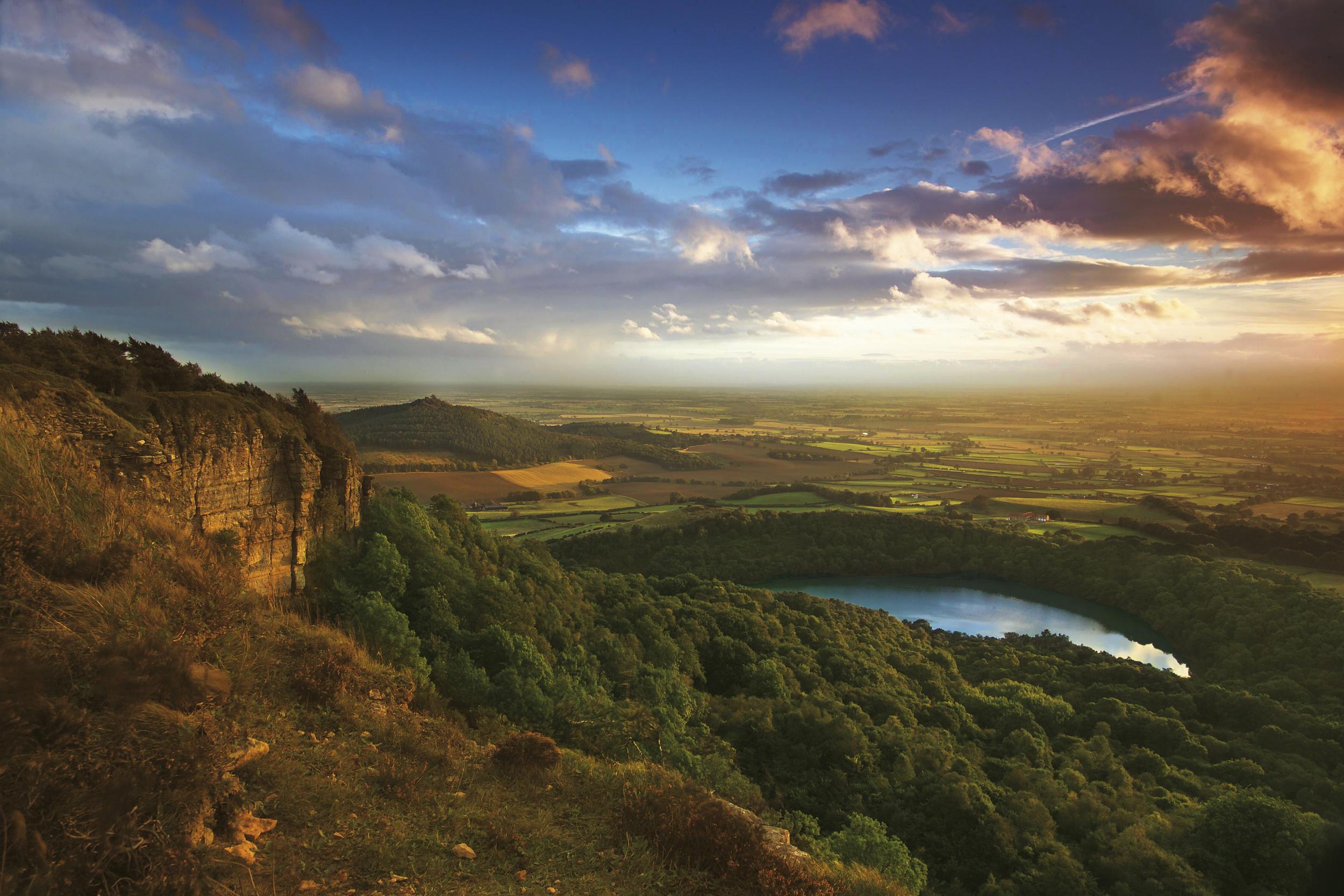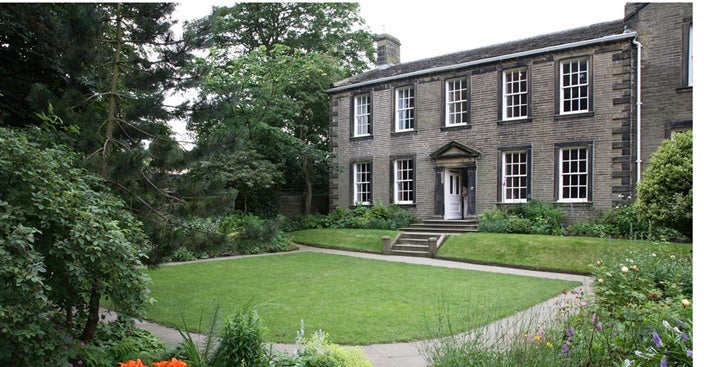The Independent's journalism is supported by our readers. When you purchase through links on our site, we may earn commission.
On the trail of the Brontë sisters in Yorkshire
The village of Haworth and the surrounding moors are marking 200 years of the literary family

“Legend has it, if a woman passes through the hole of Ponden Kirk rock, they’ll marry within the year,” my guide, Stephen, said. I doubted any of the Brontë sisters scrambled down a steep crag and through a narrow crevice, so I wasn’t about to.
Deep in the heart of Brontë country, this rock is said to have been the inspiration for Penistone Crags in Wuthering Heights. From here I could take in the striking panoramic views of the Yorkshire moors, and the village of Haworth in the distance.
This year, the cobblestone village begins “Brontë200”; a five-year celebration of the bicentennial births of the region’s (and perhaps Britain’s) most famed literary family, the Brontës - starting with Charlotte’s, today. The imposing and dramatic landscape of the moors inspired her, along with sisters Emily and Anne, to write some of literature’s most enigmatic and iconic fiction.
My tour began at Ponden Hall, the 17th-century building, now run as a B&B, that is believed to have inspired Emily’s Wuthering Heights. From here we marched up the moors, not seeing a soul, following signs with directions in English and Japanese – a hint at the nationality of many of the area’s literary pilgrims.
“It’s hard to imagine the sisters walking through the moors in conditions like today, without proper coats and walking shoes”, Stephen said. I had to agree as we tramped along boggy tracks dotted with frozen puddles, thick grass and large rocks to Top Withens, a few miles further on from Ponden Kirk. This delapidated farmhouse is thought by some to have been the basis for the Earnshaw family home in Wuthering Heights. Today, a plaque on the side reads, “The building, even when complete, bore no resemblance to the house” slightly dismantling that theory, and belittling the tiring walk to reach it. But still, it’s worth it for the views.
Striding back down the valley, we visited Brontë Waterfall, a picnicking area popular with the sisters and later named after them. In dry weather, it’s little more than a stream trickling down the valley, but after rain the waterfall is, according to Stephen, much more impressive; it is easy to imagine why the girls walked so far in tough conditions to spend time here.
Back at Ponden Hall, I checked into the Earnshaw Room (they really don’t shy away from the Brontë connection in these parts), doing as Mr Lockwood did in Wuthering Heights by sleeping in a traditional 18th-century style box bed – rather like a freestanding wardrobe that you climb into via a sliding door on the side. The room’s tiny single-paned window, which the box bed surrounds, is where Emily supposedly imagined Cathy’s ghost clawing at the glass.
But while Emily’s local influence looms the largest, it was Charlotte who was the first sister to find success. Born six miles away in Thornton, Charlotte spent most of her life in Haworth, living at the Parsonage with her father, sisters and brother, until she died at just 39. The famous literary family home is now the Brontë Parsonage Museum, which contains the world’s largest collection of Brontë memorabilia.
Inside, Tracey Chavalier (author of Girl with a Pearl Earring) has curated the exhibition, “Charlotte Great and Small” (to 1 January 2017). The exhibition is dedicated to comparing the author’s physical slightness, at just 4ft10 and the constraints of her life as a woman, to the enormity of her ambition. Like her own famous heroine, Jane Eyre, Charlotte was “small, plain and obscure”.

Quotes written on the walls and displayed alongside original artefacts emphasise the disparity. In a letter written to her aunt in 1841, Charlotte said: “Papa will, perhaps, think it a wild and ambitious scheme; but whoever rose in the world without ambition?” Her determination for greatness contrasts with her obsession with all things tiny, including a book she made, so small it fits in the palm of your hand.
But Charlotte, a storyteller of love, never told her own love story. Among the artefacts is a letter written in French to her professor in Belgium, for whom she pronounced her love. Professor Constantin Heger became the object of her affections after she and Emily studied French literature in Brussels in 1842. The letters were torn up before being sewn back together, which Rebecca Yorke of the museum speculates were probably repaired by his wife.
The rest of the house remains much as the family would have known it: the father’s study, with its piano and view of the church; the dark and rather cramped kitchen; and the little bedrooms. The most evocative space is the dining room. This is where the sisters worked, long after their father had gone to bed, walking around the table, helping each other with their writing. Here are the girls’ original writing desks, where the stories of Jane Eyre and Wuthering Heights were penned.
Travel essentials
Getting there
The closest station is Keighley. Trainline (thetrainline.com) offers tickets from London Kings Cross via Leeds from £24.50 one way.
Staying there
Ponden Hall (ponden-hall.co.uk). Doubles from £85 a night, B&B.
Click here to find hotels in Yorkshire
Visiting there
Brontë Parsonage Museum (bronte.org.uk). The exhibition, Charlotte Great and Small, runs until 1 January 2017 (entry £7.50).
More information
Join our commenting forum
Join thought-provoking conversations, follow other Independent readers and see their replies
Comments
Bookmark popover
Removed from bookmarks